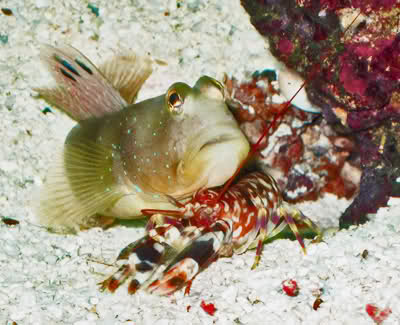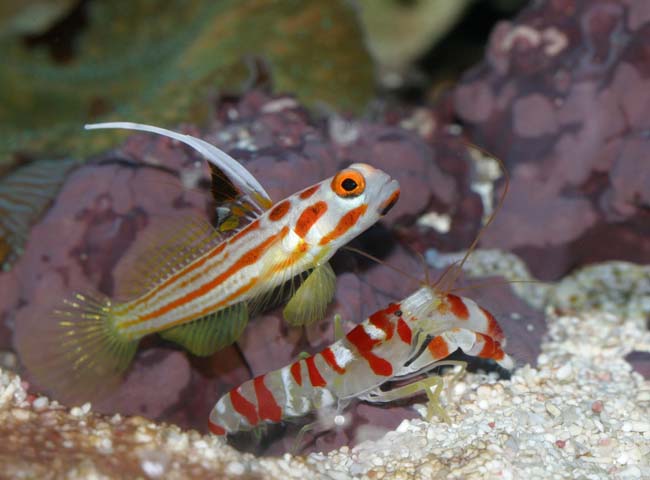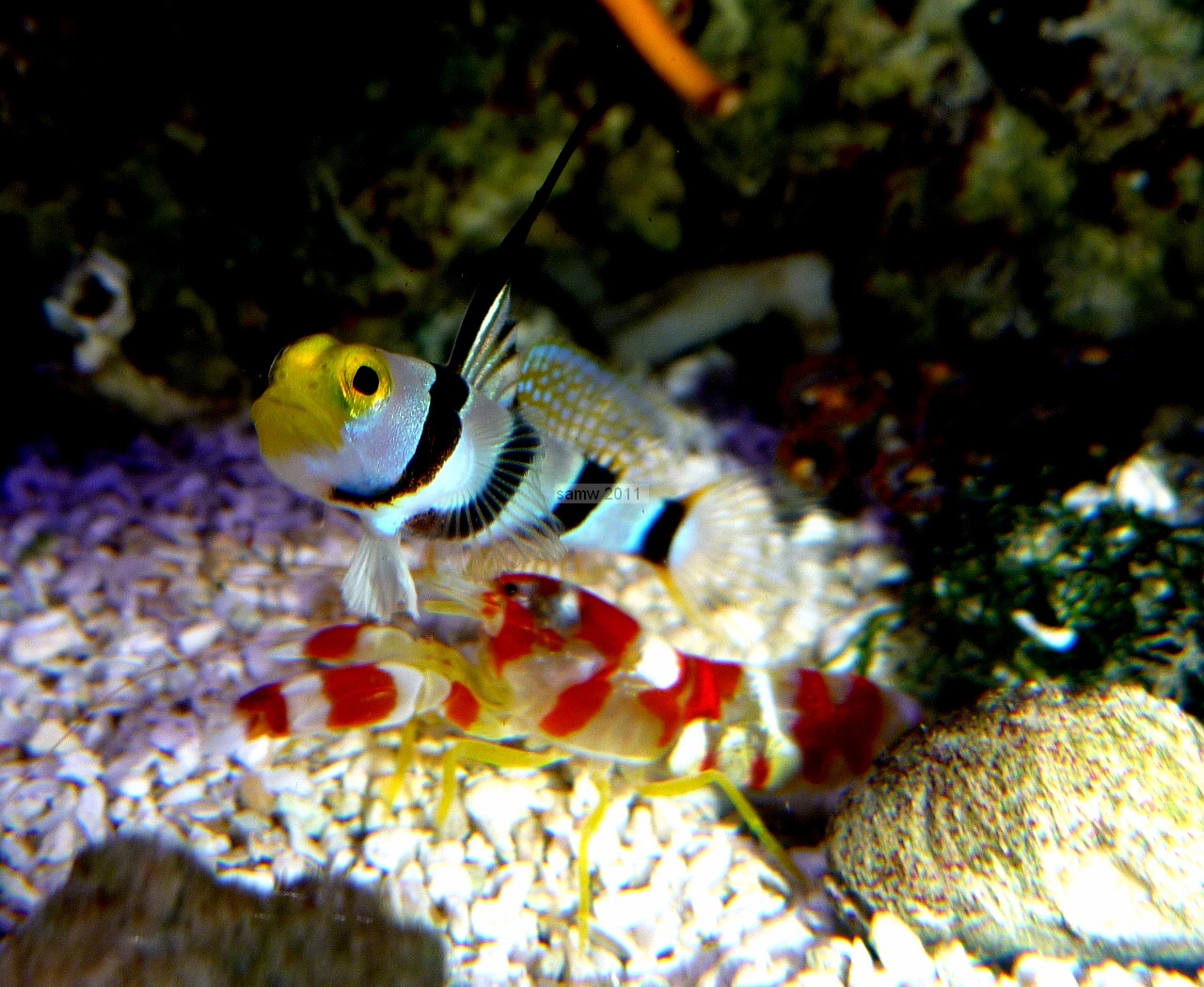Symbiosis in Pistol Shrimp and Goby Fish
Biology 342 Fall 2014
Sam Ramirez, Jaclyn Calkins
Reed College
Symbiosis in Goby Fish and Alpheus Shrimp

Throughout the Atlantic, Pacific, and Indian oceans, species of Gobiid fish are known to form a symbiotic pair relationship with species of pistol shrimp of the family Alpheidae. A symbiotic relationship consists of interactions between two different organisms living in close physical association, typically to the advantage of both parties involved. The pistol shrimp and goby pair begin bonding as juveniles and remain in pairs as adults, foraging together and sharing a burrow (Yanagisawa, 1984).
There are 3 types of symbiotic relationships:
- Mutualism: when there is a fairly even ratio of cost to benefit, such as in the shrimp/goby interaction.
- Commensalism: an association between two organisms in which one benefits and the other derives neither benefit nor harm.
- Parasitism: a relationship between two species of plants or animals in which one benefits at the expense of the other.
What Do Gobies and Shrimp Contribute to Their Symbiotic Partnership?
The Goby's Eyes Are Its Major Contribution
The most important attribute the goby fish contributes to the partnership is its superior eyesight. The pistol shrimp has very poor vision (some species can only identify two colors), so when foraging for food outside of the burrow, it is very vulnerable to predators, since it cannot detect potential threats effectively (Z. Jaafar 2012). This is where the goby comes in. When outside of the burrow, the shrimp maintains constant contact with the goby with its antennae, while the goby keeps a lookout. When it detects danger, it flicks its tail, alerting the shrimp and causing it to retreat back to the safety of the burrow (Karplus 1987).
The Shrimp Contributes Its Digging Abilities
This burrow is the alpheid shrimp’s most important contribution to the goby’s fitness. Gobies sleep in burrows in the sediment for safety, but are incapable of digging a burrow as effectively as the shrimp. So in exchange for the benefit of the goby’s eyesight, the shrimp digs and shares its burrow with the goby, and they sleep together every night. The goby also uses the burrow for mating, which entails a lengthy ritual that requires a safe space, a necessity the burrow easily fills.


Over 120 different species of goby fish have been found to engage in a symbiotic relationship with an apheid shrimp (Karplus, 2011). In each of the tabs to the left, a more in depth look at this symbiosis can be found from the perspective of each of Nico Tinbergen’s four questions of ethology: Adaptive Value, Phylogeny, Mechanism, and Ontogeny.
